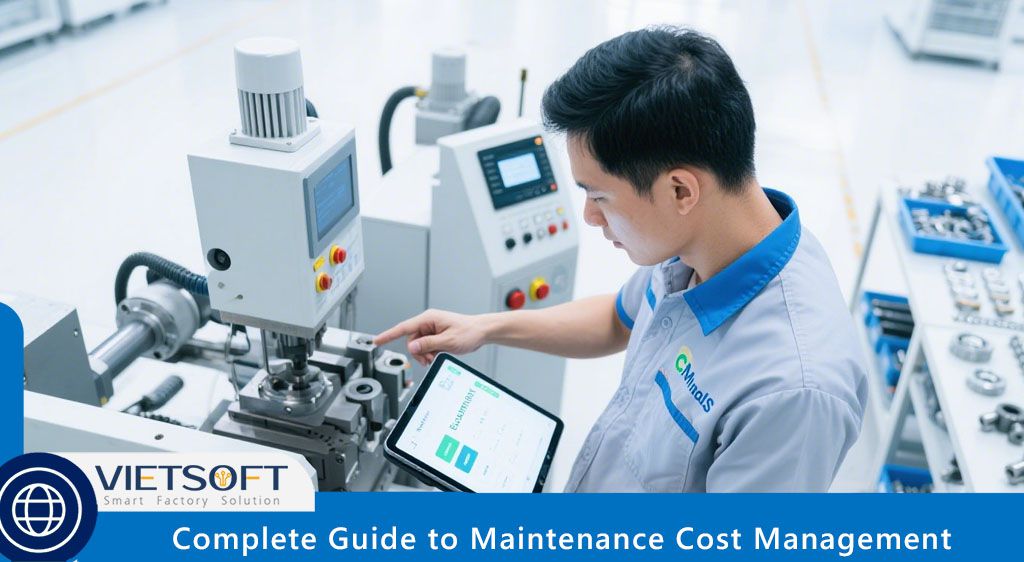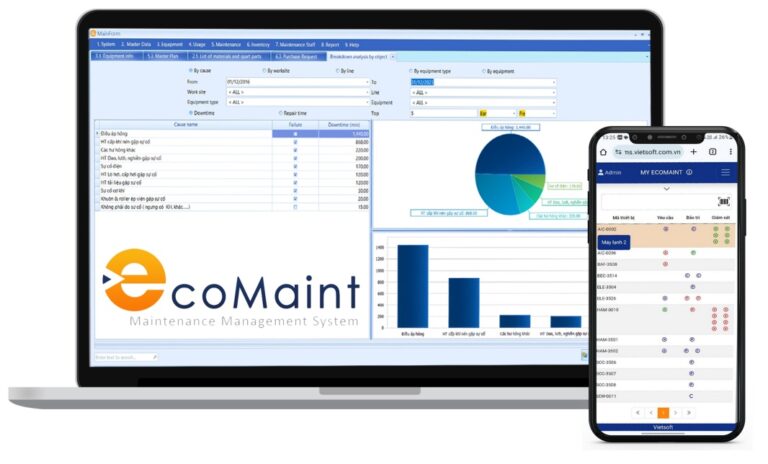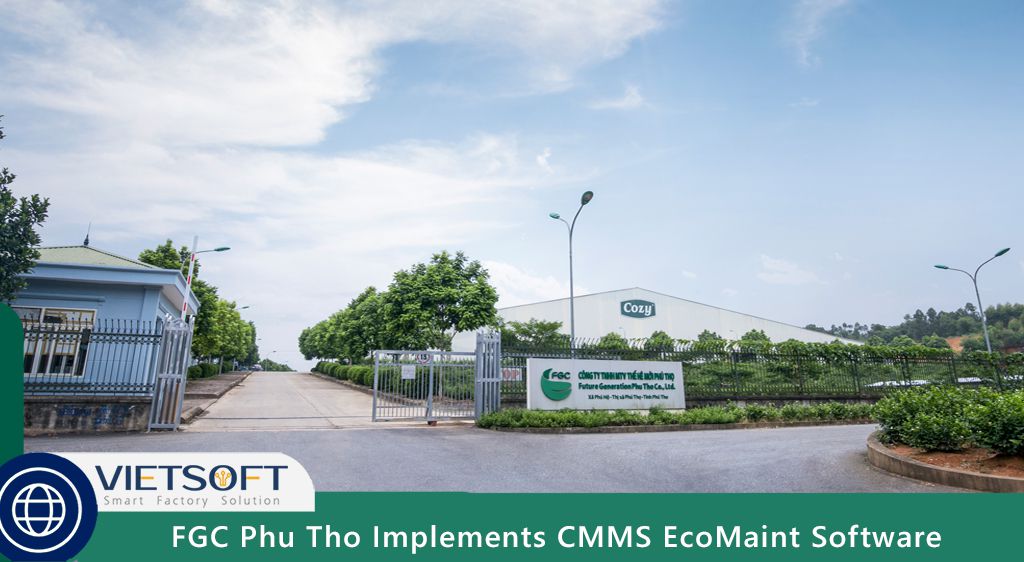
In today’s fast-paced industrial landscape, Maintenance Cost Management is a critical strategy for organizations aiming to optimize operational efficiency, reduce downtime, and enhance profitability. By strategically managing maintenance expenses, businesses can transform maintenance from a perceived cost center into a value-driven investment that supports long-term operational success. This comprehensive guide explores the concept of Maintenance Cost Management, its importance, key components, strategies, and the role of technology in achieving cost-effective maintenance operations.
I. What Is Maintenance Cost Management?
Maintenance Cost Management refers to the strategic process of planning, tracking, and optimizing expenses associated with maintaining assets to ensure operational efficiency and reliability. It involves balancing the costs of labor, materials, downtime, and other resources while maximizing equipment uptime and extending asset lifespans. Unlike simply cutting costs, effective Maintenance Cost Management focuses on making informed, data-driven decisions to achieve long-term savings without compromising safety or performance.
This process is particularly vital in industries where assets—such as machinery, vehicles, or infrastructure—are central to operations. For example, in manufacturing, poor maintenance can lead to production halts costing millions, while in healthcare, equipment downtime can jeopardize patient safety. By implementing robust Maintenance Cost Management, organizations can mitigate these risks and align maintenance activities with broader business goals.
II. Why Maintenance Cost Management Matters
Maintenance costs can account for a significant portion of an organization’s operating budget—often between 5% and 40%, depending on the industry. According to industry data, nearly 20% of facilities dedicate over 20% of their budget to maintenance activities, highlighting the need for strategic cost control. Here’s why Maintenance Cost Management is essential:
III. Key Benefits of Maintenance Cost Management
· Cost Savings: By optimizing resource allocation and reducing unnecessary expenses, businesses can lower overall maintenance costs without sacrificing asset reliability.
· Reduced Downtime: Proactive maintenance strategies minimize unplanned outages, which can cost industries like automotive manufacturing up to $695 million annually, as reported by Siemens in 2024.
· Extended Asset Lifespan: Regular, well-planned maintenance prevents premature equipment failure, maximizing the return on investment for costly assets.
· Enhanced Safety: Proper maintenance ensures equipment operates safely, reducing workplace accidents and regulatory penalties.
· Improved Productivity: Well-maintained assets perform at optimal levels, boosting operational efficiency and output.
IV. The Risks of Poor Maintenance Cost Management
Neglecting Maintenance Cost Management can lead to severe consequences, such as:
- Increased Downtime Costs: Unplanned outages result in lost revenue, idle staff wages, and emergency repair expenses.
- Higher Repair Costs: Deferred maintenance, as seen in San Diego’s $1 billion maintenance backlog in 2024, often escalates into costly replacements or system-wide failures.
- Safety Hazards: Poorly maintained equipment poses risks to workers, potentially leading to accidents or compliance violations.
- Reputational Damage: Downtime and poor product quality can erode customer trust and harm brand reputation.
By prioritizing Maintenance Cost Management, organizations can avoid these pitfalls and transform maintenance into a strategic asset.
V. Key Components of Maintenance Costs
To effectively manage maintenance costs, it’s crucial to understand the different types of expenses involved. Maintenance costs can be categorized into three primary types: direct, indirect, and induced costs.
1. Direct Costs
These are expenses directly tied to maintenance activities, including:
- Labor: Wages, benefits, and overtime pay for maintenance technicians.
- Spare Parts and Materials: Costs for replacement parts, lubricants, and consumables.
- Contractor Fees: Payments for outsourced maintenance services, such as specialized repairs or inspections.
2. Indirect Costs
Indirect costs arise from inefficiencies or downtime caused by inadequate maintenance, such as:
- Lost Production: Revenue losses due to equipment downtime.
- Idle Staff Costs: Wages paid to workers unable to perform their duties during outages.
- Energy Waste: Increased energy consumption from poorly maintained equipment.
3. Induced Costs
These are broader, system-wide consequences of poor maintenance planning, including:
- Reputational Damage: Customer dissatisfaction due to delays or defective products.
- Regulatory Fines: Penalties for non-compliance with safety or environmental standards.
- Premature Asset Replacement: Higher capital expenditures due to neglected maintenance.
Understanding these cost categories enables maintenance managers to identify high-impact areas for optimization and allocate resources effectively.
VI. Core Objectives of Maintenance Cost Management
The primary goal of Maintenance Cost Management is to optimize spending while ensuring assets remain reliable and efficient. Specific objectives include:
1. Minimizing Total Maintenance Costs
Effective cost management focuses on reducing unnecessary expenses without compromising quality. For instance, the 2025 BCIS Facilities Management Forecast predicts a 17% rise in maintenance costs by 2029 due to labor shortages and stricter safety regulations. Strategic cost control can mitigate these increases by prioritizing high-value maintenance tasks.
2. Reducing Downtime
Downtime is a major cost driver. A 2024 Siemens study reported that downtime costs in heavy industry have risen 1.6 times since 2019, reaching $59 million annually for some facilities. Maintenance Cost Management aims to minimize downtime through proactive strategies, ensuring assets remain operational.
3. Improving Budget Accuracy
Accurate budgeting prevents overspending or underfunding. By leveraging historical data and real-time analytics, maintenance teams can forecast costs with precision, aligning budgets with operational needs. A 2025 SFG20 report noted that 40% of organizations face shrinking maintenance budgets, making accurate forecasting more critical than ever.
4. Enhancing Asset Reliability
Reliable assets reduce the frequency and severity of repairs, lowering overall costs. Maintenance Cost Management emphasizes strategies like preventive and predictive maintenance to ensure equipment performs consistently.
VII. Strategies for Effective Maintenance Cost Management
To achieve these objectives, organizations can adopt the following strategies, each designed to optimize resources, reduce costs, and improve operational efficiency.
1. Prioritize Proactive Maintenance
Proactive maintenance, including preventive and predictive approaches, is a cornerstone of cost management. By addressing issues before they escalate, businesses can avoid costly repairs and downtime.
- Preventive Maintenance: Scheduled inspections and servicing based on manufacturer recommendations or usage patterns. For example, lubricating machinery every 500 operating hours can prevent bearing failures.
- Predictive Maintenance: Leverages IoT sensors and data analytics to predict failures before they occur. Deloitte’s research indicates that predictive maintenance can reduce costs by 5–10% and increase uptime by 10–20%.
- Condition-Based Maintenance: Triggers maintenance based on real-time data, such as vibration or temperature readings, ensuring interventions are timely and cost-effective.
2. Monitor Key Performance Indicators (KPIs)
Tracking KPIs provides insights into maintenance performance and cost efficiency. Essential KPIs include:
- Maintenance Cost per Unit of Production: Measures spending relative to output, highlighting cost-efficiency trends.
- Planned vs. Unplanned Maintenance Ratio: A higher ratio of planned maintenance indicates better cost control.
- Mean Time Between Failures (MTBF): Tracks asset reliability, with higher values indicating fewer failures.
- Mean Time to Repair (MTTR): Measures repair efficiency, with lower values indicating faster resolutions.
- Inventory Turnover for Spare Parts: Ensures optimal stock levels, reducing holding costs.
A Computerized Maintenance Management System (CMMS) like Vietsoft’s EcoMaint can automate KPI tracking, providing real-time insights to guide decision-making.
3. Optimize Inventory Management
Excess or insufficient spare parts inventory can inflate costs. Strategies to optimize inventory include:
- Just-in-Time Purchasing: Order parts as needed to minimize holding costs.
- Data-Driven Forecasting: Use historical data to predict part usage, avoiding overstocking or stockouts.
- Supplier Negotiations: Secure bulk discounts or long-term contracts to reduce material costs.
EcoMaint’s inventory management module helps track spare parts usage, alert for low stock, and streamline procurement, ensuring cost-efficient inventory management.
4. Invest in Workforce Training
Skilled technicians are critical to cost-effective maintenance. Training programs should cover:
- Equipment Operation: Ensures proper use to prevent damage.
- Diagnostic Skills: Enables early detection of issues, reducing repair costs.
- CMMS Usage: Empowers staff to leverage software for efficient task management.
Regular training reduces errors, improves first-time fix rates, and enhances overall productivity.
5. Leverage Technology with CMMS EcoMaint
Technology is a game-changer in Maintenance Cost Management. Vietsoft’s CMMS EcoMaint, developed specifically for the Vietnamese market, offers a comprehensive solution to streamline maintenance operations. Key features include:
- Work Order Management: Automates task scheduling and tracking, reducing manual errors.
- Real-Time Data Analytics: Provides insights into cost trends, asset performance, and maintenance efficiency.
- Preventive Maintenance Scheduling: Ensures timely interventions to prevent costly failures.
- Inventory Tracking: Monitors spare parts usage and optimizes stock levels.
- Mobile Accessibility: Allows technicians to access work orders and report issues on the go.
By integrating these features, EcoMaint helps businesses reduce downtime, optimize resource allocation, and achieve significant cost savings. To explore how EcoMaint can transform your maintenance operations, visit Vietsoft’s EcoMaint product page for a demo.
6. Outsource Non-Core Maintenance
Outsourcing specialized or infrequent maintenance tasks can reduce costs by:
- Accessing Expertise: External vendors often have specialized skills for complex repairs.
- Reducing Overhead: Eliminates the need for in-house training or equipment for rare tasks.
- Improving Flexibility: Allows scaling maintenance efforts based on demand.
However, outsourcing requires clear agreements and careful vendor selection to avoid quality issues or hidden costs.
VIII. Calculating Maintenance Costs
To manage maintenance costs effectively, organizations must calculate expenses accurately. The following formulas provide a framework for cost analysis:
1. Total Maintenance Cost
Total Maintenance Cost = Labor Costs + Material Costs + Contractor Fees + Energy Costs + Overhead
Example: A manufacturing plant spends $50,000 on technician wages, $20,000 on spare parts, $10,000 on contractor services, $5,000 on energy, and $15,000 on overhead annually. The total maintenance cost is: $50,000 + $20,000 + $10,000 + $5,000 + $15,000 = $100,000
2. Downtime Cost
Downtime Cost = Minutes of Downtime × Cost per Minute
Example: If a production line is down for 60 minutes and the cost per minute is $5,600 (based on Gartner’s estimate), the downtime cost is: 60 × $5,600 = $336,000
3. Total Cost of Ownership (TCO)
TCO = Initial Asset Cost + Operating Costs + Maintenance Costs + Downtime Costs + Production Costs – Asset Residual Value
Example: An asset costs $100,000 initially, with $20,000 in annual operating costs, $15,000 in maintenance costs, $10,000 in downtime costs, $30,000 in production costs, and a residual value of $20,000 after five years. The TCO over five years is: $100,000 + (5 × $20,000) + (5 × $15,000) + (5 × $10,000) + (5 × $30,000) – $20,000 = $355,000
These calculations help maintenance managers quantify costs, identify inefficiencies, and justify investments in proactive maintenance strategies.
IX. Overcoming Common Challenges in Maintenance Cost Management
Despite its importance, Maintenance Cost Management faces several challenges:
1. Budget Constraints: Shrinking budgets, as noted in the 2025 SFG20 report, force maintenance teams to do more with less.
o Solution: Use data-driven budgeting and prioritize high-impact maintenance tasks.
2. Manual Processes: Relying on spreadsheets or paper-based systems leads to errors and delays.
o Solution: Adopt a CMMS like EcoMaint to automate workflows and improve data accuracy.
3. Lack of Skilled Personnel: Labor shortages increase reliance on outsourcing or overtime.
o Solution: Invest in training and cross-skilling to build a versatile workforce.
4. Data Overload: Collecting and analyzing maintenance data can be overwhelming without proper tools.
o Solution: Leverage analytics tools within CMMS platforms to simplify data interpretation.
By addressing these challenges, organizations can enhance their Maintenance Cost Management practices and achieve sustainable cost reductions.
X. Emerging Trends in Maintenance Cost Management
As industries evolve, new trends are shaping the future of Maintenance Cost Management:
1. IoT and Predictive Analytics: IoT sensors and machine learning enable real-time monitoring and failure prediction, reducing downtime and costs.
2. Sustainability Focus: Energy-efficient maintenance practices, such as optimizing HVAC systems, align with environmental goals and reduce costs.
3. Mobile CMMS Solutions: Mobile apps allow technicians to access work orders, report issues, and update records in real time, improving efficiency.
4. Integration with ERP Systems: Linking CMMS with enterprise resource planning (ERP) systems streamlines budgeting and procurement processes.
These trends highlight the importance of adopting modern technologies to stay competitive in Maintenance Cost Management.
XI. How CMMS EcoMaint Supports Maintenance Cost Management
Vietsoft’s CMMS EcoMaint is a powerful tool designed to address the unique needs of Vietnamese businesses in managing maintenance costs. By centralizing maintenance data and automating key processes, EcoMaint empowers organizations to:
- Track Costs in Real Time: Monitor labor, parts, and contractor expenses with detailed reports.
- Optimize Maintenance Schedules: Automate preventive maintenance tasks to reduce downtime and repair costs.
- Enhance Decision-Making: Use built-in analytics to identify cost-saving opportunities and prioritize critical assets.
- Streamline Inventory: Maintain optimal spare parts levels to avoid overstocking or shortages.
EcoMaint’s user-friendly interface and mobile accessibility make it an ideal solution for maintenance teams of all sizes. Curious about how EcoMaint can revolutionize your maintenance operations? Discover CMMS EcoMaint here.
Contact us via hotline: 0986778578 or email: sales@vietsoft.com.vn.
XII. Conclusion
Maintenance Cost Management is not just about cutting costs—it’s about making strategic investments to enhance asset reliability, reduce downtime, and improve operational efficiency. By understanding cost components, adopting proactive maintenance strategies, leveraging technology like CMMS EcoMaint, and staying ahead of industry trends, organizations can transform maintenance into a competitive advantage.
For maintenance professionals in Vietnam and beyond, implementing these strategies can lead to significant cost savings, improved productivity, and enhanced safety. Start by assessing your current maintenance practices, identifying cost drivers, and exploring tools like EcoMaint to streamline your operations. With the right approach, Maintenance Cost Management can drive measurable results and position your organization for long-term success.




